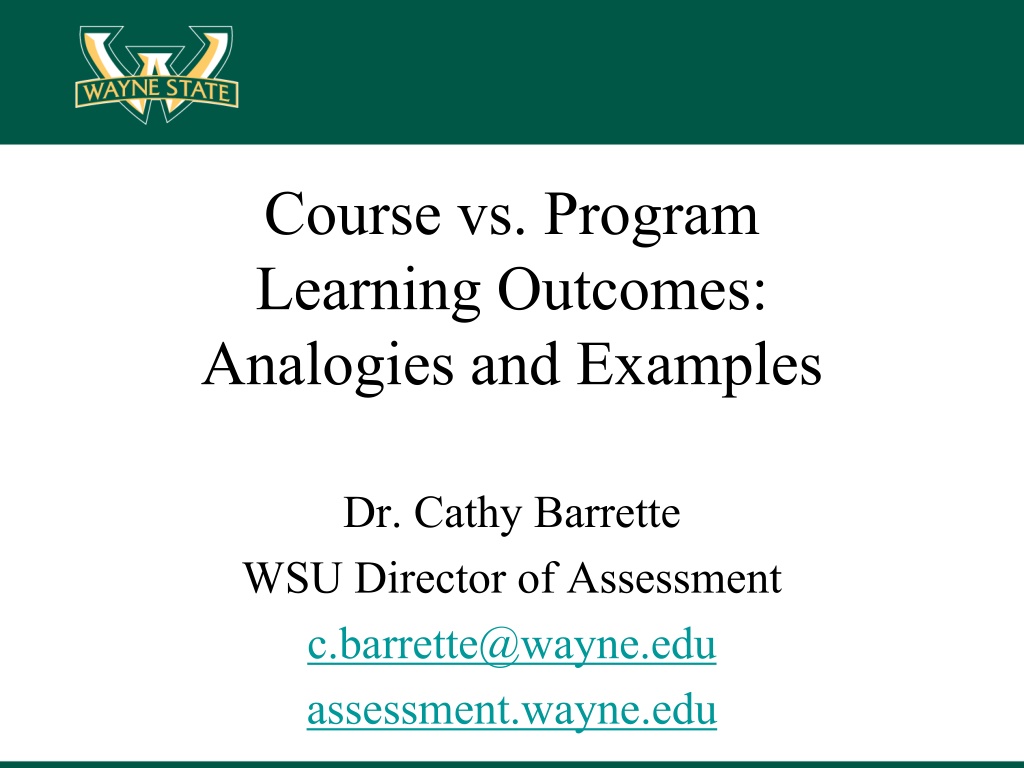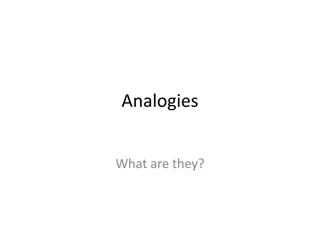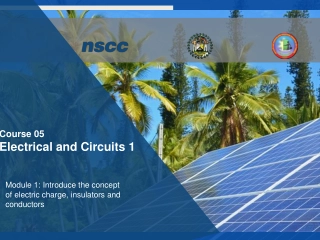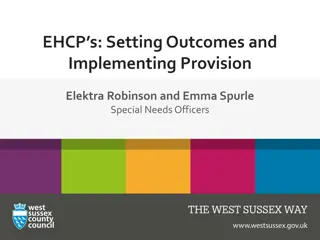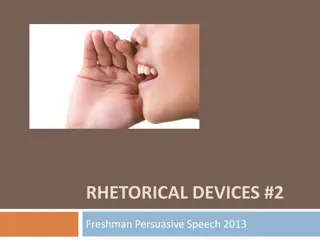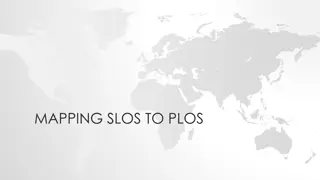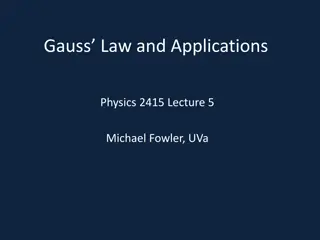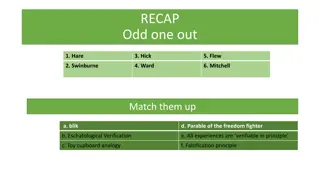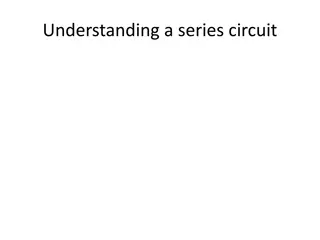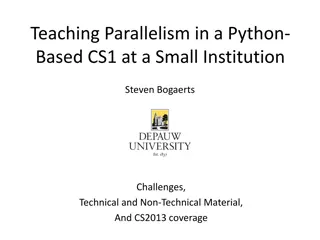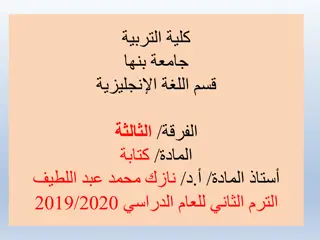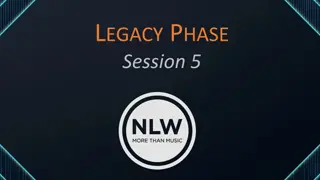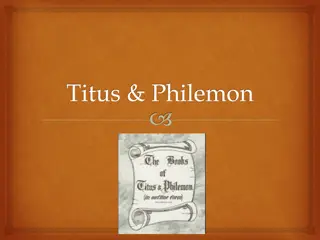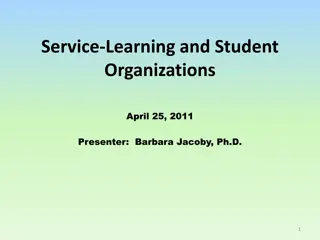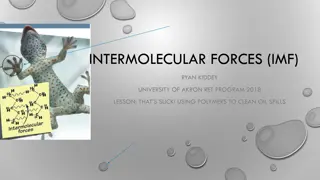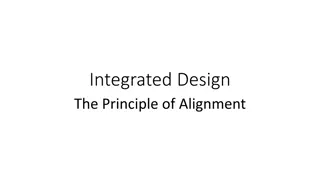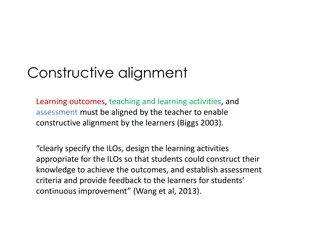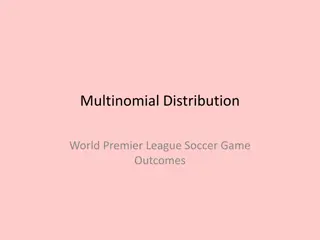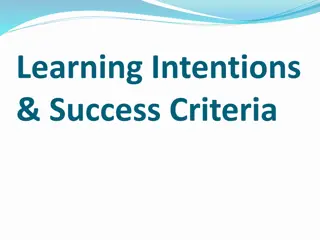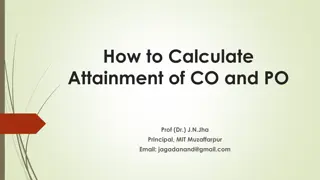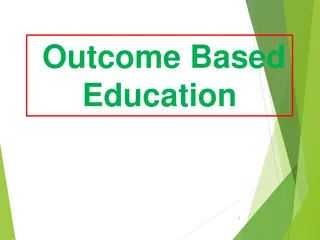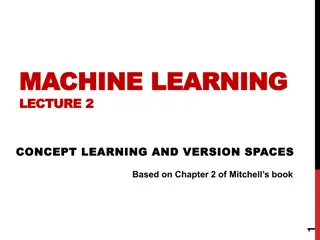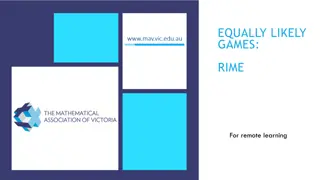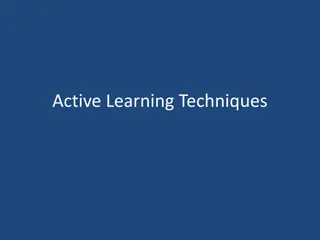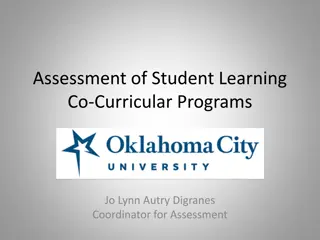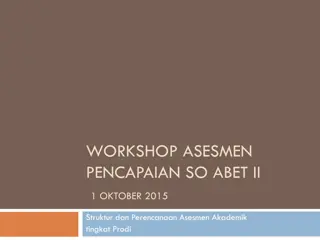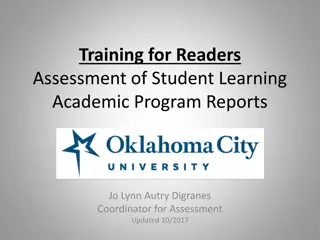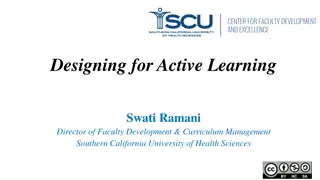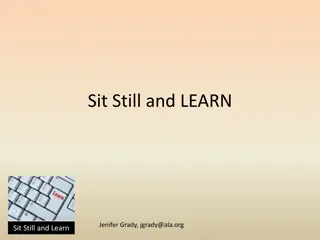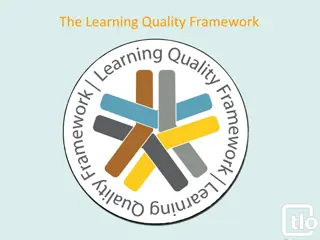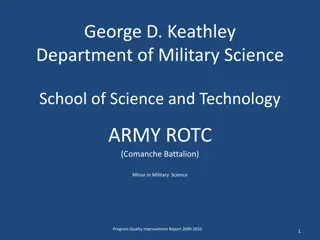Understanding Learning Outcomes: Analogies and Examples
Explore the concept of learning outcomes through analogies with salads and maps. Learning outcomes are specific, measurable statements of what students should know or be able to do after completing a program. Discover how outcomes differ at various organizational levels and how course outcomes contribute to program outcomes like ingredients in a salad. Zoom in to see individual parts with course outcomes, and zoom out for a big picture view with program outcomes.
Download Presentation

Please find below an Image/Link to download the presentation.
The content on the website is provided AS IS for your information and personal use only. It may not be sold, licensed, or shared on other websites without obtaining consent from the author. Download presentation by click this link. If you encounter any issues during the download, it is possible that the publisher has removed the file from their server.
E N D
Presentation Transcript
Course vs. Program Learning Outcomes: Analogies and Examples Dr. Cathy Barrette WSU Director of Assessment c.barrette@wayne.edu assessment.wayne.edu
What Are Learning Outcomes? Specific, measurable statements of what graduating/exiting students should know, be able to do, believe, or value after completing the program Observable behaviors whenever possible Focused on the results of student learning, not on the learning process or on teaching Derived from the program s mission statement
Levels of Outcomes Outcomes can be identified at many organizational levels: Institutional College/School/Division Department Program Course Class session/Lesson Program outcomes are the focus for program assessment
An Analogy: Salads and Outcomes These two pictures have similar ingredients. Why is only one a salad?
The difference in ingredients degree of preparation and integration makes only one image a salad. The ingredients contribute to the salad, but a salad is more than the sum of its parts.
From Salads to Outcomes Course outcomes identify the ingredients that make up the program Incremental knowledge and skills that students develop bit by bit throughout the program Aligned with but typically narrower than program outcomes Program outcomescharacterize the salad what individual ingredients make once they are prepared and integrated Students cumulative learning across courses at the end of the program
Another Analogy: Map Scale Zoom out for program outcomes to get the big picture, i.e., a view of how all of the parts fit together.
Zoom in for course outcomes to get a view of the individual parts that make up the whole.
Academic Program Example Program Mission: Professional development for foreign language teachers Program Outcome 2: Students evaluate pedagogical materials Program Outcome 1: Students summarize second language acquisition theory and research Course Outcome: Students critically evaluate research on second language acquisition Course Outcome: Students apply (an)understanding [of research on valid assessment] to the critique of assessment instruments appropriate and useful to individual teaching circumstances Course Outcome: Students critically evaluate various pedagogical approaches to the teaching of speaking and writing within students own instructional contexts
More Information Would you like more information about program assessment? Visit assessment.wayne.edu for: Video tutorials PowerPoint presentations Templates Supporting documentation Examples WSU progress reports And more!
